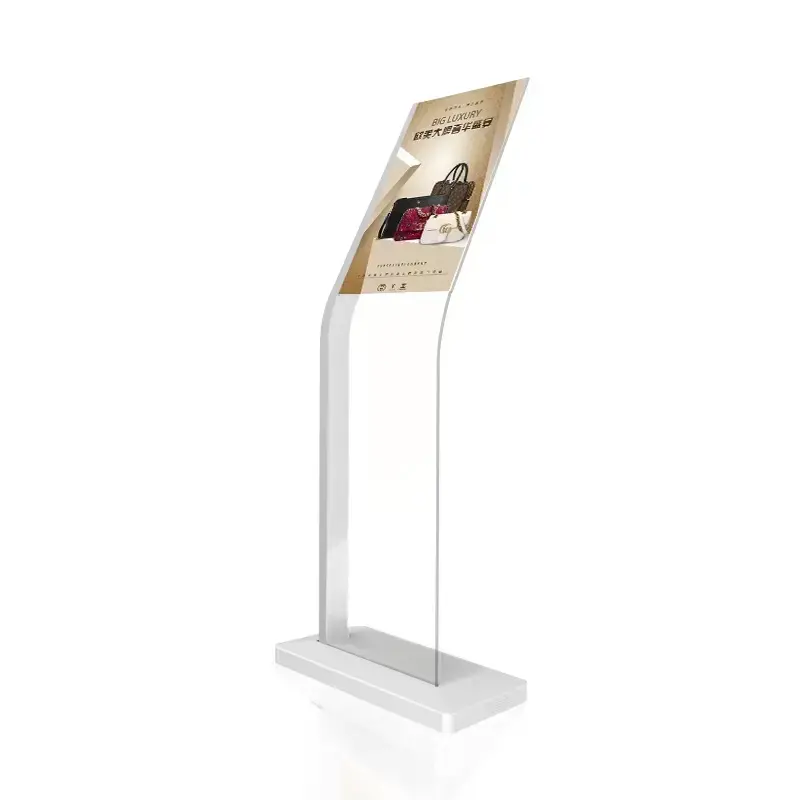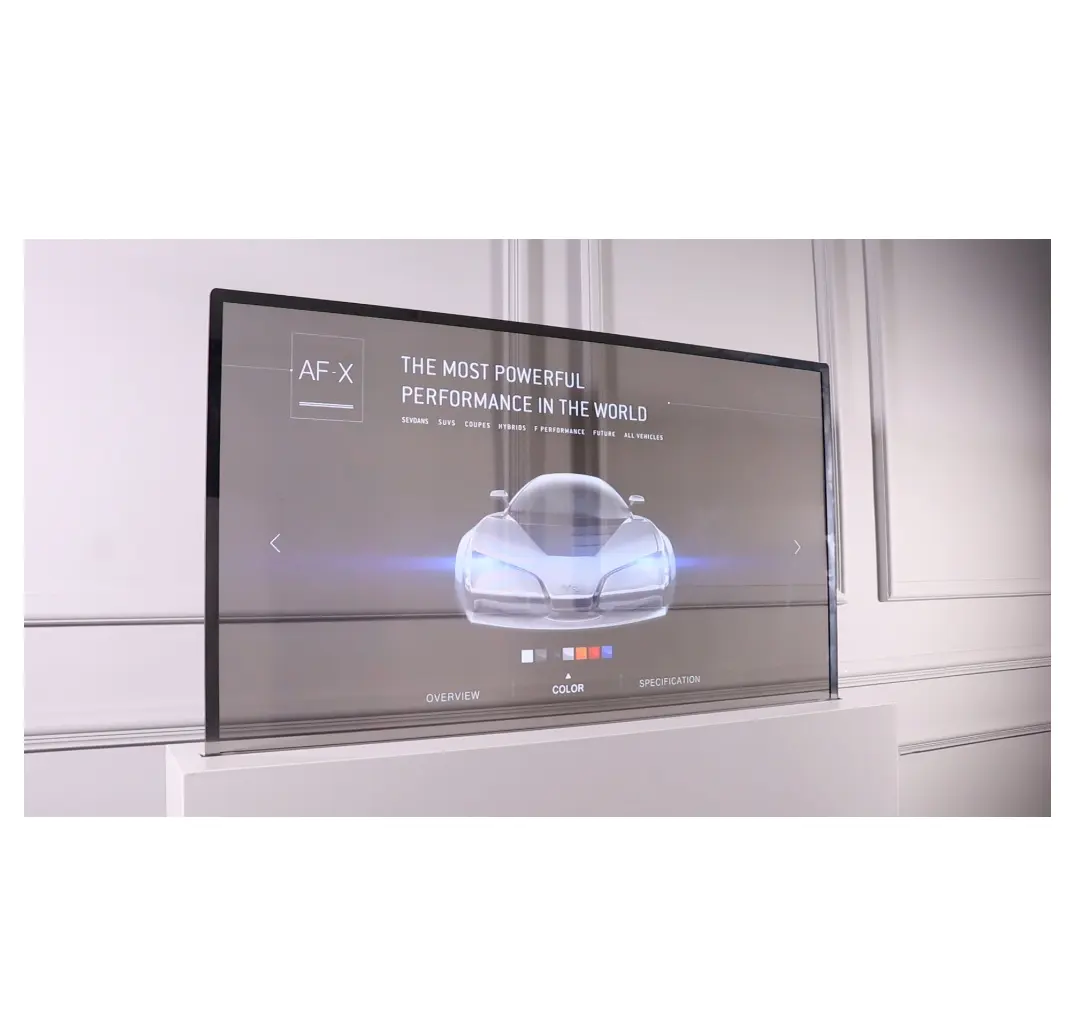The Revolutionary Impact of See-Through Display Technology
Transparent OLED displays represent one of the most groundbreaking innovations in display technology, fundamentally transforming how we interact with digital content in our physical environment. These cutting-edge screens combine the superior visual quality of OLED technology with transparency, creating displays that seamlessly blend into their surroundings while delivering vivid, high-contrast images.
As we witness the evolution of display technology, transparent OLED displays are emerging as a pivotal innovation across various sectors, from retail and automotive to smart home applications. Their unique ability to maintain clarity while inactive and transform into vibrant displays when powered makes them particularly versatile for modern applications.
Understanding the Technology Behind Transparent Displays
Core Components and Working Principles
At the heart of transparent OLED displays lies a sophisticated arrangement of transparent components. Unlike traditional displays, these screens utilize transparent thin-film transistors (TFTs) and transparent conducting electrodes. The OLED elements themselves are inherently transparent when not emitting light, allowing for exceptional clarity in their off state.
The technology employs specialized organic compounds that emit light when electricity passes through them. These compounds are arranged in precise patterns between transparent conductive layers, enabling both light emission and transparency. The result is a display that can alternate between complete transparency and vivid image display.
Technical Advantages Over Traditional Displays
Transparent OLED displays offer several distinct advantages compared to conventional display technologies. They provide superior contrast ratios and deeper blacks, as individual pixels can be completely turned off. The technology also enables wider viewing angles and faster response times, crucial for interactive applications.
Perhaps most importantly, these displays maintain their transparency when powered off, unlike LCD-based transparent displays that require constant backlighting. This characteristic makes them more energy-efficient and aesthetically pleasing in various applications.
Applications Across Industries
Retail and Commercial Solutions
The retail sector has embraced transparent OLED displays as powerful tools for creating immersive shopping experiences. Store windows transform into interactive promotional spaces while maintaining visibility into the store. Luxury brands utilize these displays to overlay product information onto physical merchandise, creating engaging hybrid shopping experiences.
Commercial spaces benefit from the technology's ability to provide information without obstructing views or taking up additional space. From corporate lobbies to museums, transparent OLED displays enable innovative ways to present information while preserving architectural aesthetics.
Automotive Integration
The automotive industry has recognized the potential of transparent OLED displays for enhancing both safety and user experience. These displays can be integrated into windshields and windows, projecting navigation information, safety alerts, and entertainment content without compromising visibility.
Modern vehicles increasingly incorporate these displays in side windows and sunroofs, offering passengers entertainment options while maintaining a clear view of the surroundings. The technology's ability to switch between transparency and display mode makes it particularly suitable for autonomous vehicles.

Design Considerations and Implementation
Environmental Factors
Implementing transparent OLED displays requires careful consideration of environmental conditions. Ambient light levels significantly impact display visibility, necessitating adaptive brightness control systems. Temperature management is also crucial, as extreme conditions can affect both performance and longevity.
Installation locations must account for direct sunlight exposure and potential glare issues. Sophisticated ambient light sensors and automatic adjustment mechanisms help maintain optimal visibility across varying conditions.
Integration Challenges
Successfully integrating transparent OLED displays into existing infrastructures presents unique challenges. Power delivery systems must be carefully concealed to maintain aesthetic appeal, while control systems need to be both accessible and unobtrusive. The physical mounting of these displays requires specialized solutions that preserve transparency while ensuring stability.
Content creation for transparent displays demands a different approach, as designers must consider both the displayed content and what lies behind the screen. This dual-layer visual consideration requires specialized design principles and content strategies.
Future Prospects and Innovations
Emerging Technologies
The future of transparent OLED displays holds exciting possibilities. Research continues into increasing transparency levels while maintaining display quality. New developments in flexible transparent displays promise to expand application possibilities, potentially enabling curved and shapeable transparent screens.
Advancements in touch sensitivity and interactive features are creating more immersive user experiences. The integration of AI and gesture recognition systems is opening new frontiers in human-computer interaction through transparent interfaces.
Market Growth and Adoption
Industry analysts project significant growth in the transparent OLED display market over the coming years. Decreasing production costs and increasing manufacturing efficiency are making the technology more accessible to a broader range of applications and industries.
As more sectors recognize the potential of transparent displays, we're seeing innovative implementations in areas like smart home technology, healthcare, and education. This expanding adoption is driving further technological advancement and market competition.
Frequently Asked Questions
How do transparent OLED displays maintain image quality while being see-through?
Transparent OLED displays achieve their dual functionality through specially designed transparent components and selective light emission. When activated, the organic light-emitting materials produce bright, vivid images, while their transparent nature allows visibility through the display when inactive or in designated areas.
What are the primary advantages of transparent OLED displays over conventional screens?
The key advantages include true transparency when not in use, superior contrast ratios, wider viewing angles, and the ability to seamlessly integrate with existing architecture and design. They also offer better energy efficiency and more versatile application possibilities compared to traditional displays.
What are the main industries adopting transparent OLED display technology?
The technology is being widely adopted in retail, automotive, architecture, and consumer electronics industries. Retail stores use them for interactive window displays, automotive manufacturers integrate them into vehicle windows and windshields, while architectural applications include smart windows and modern building interfaces.

